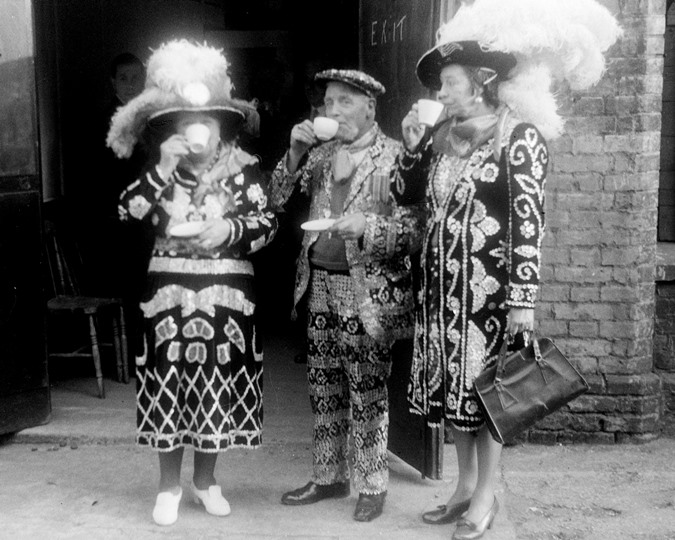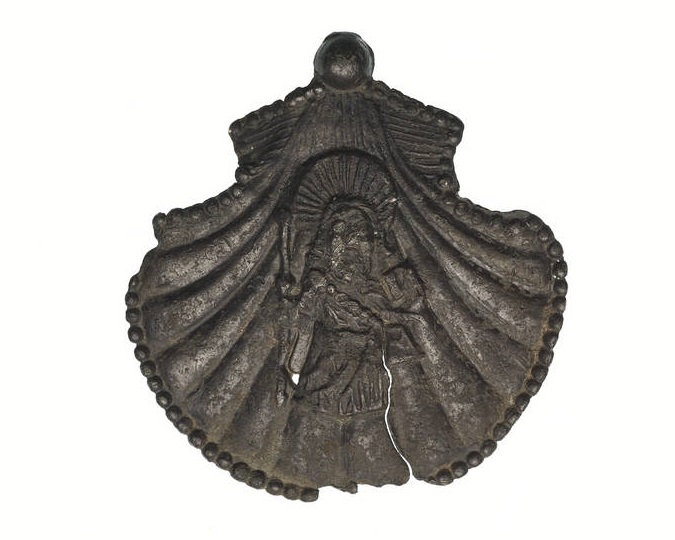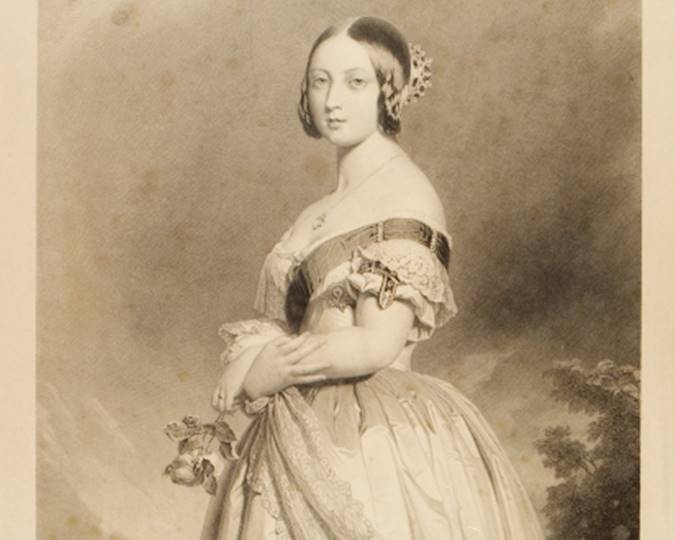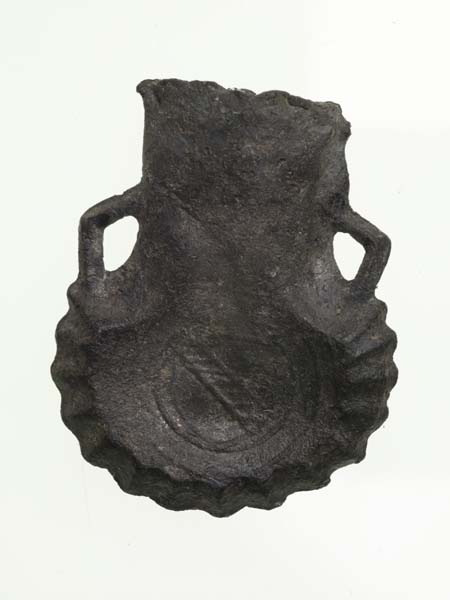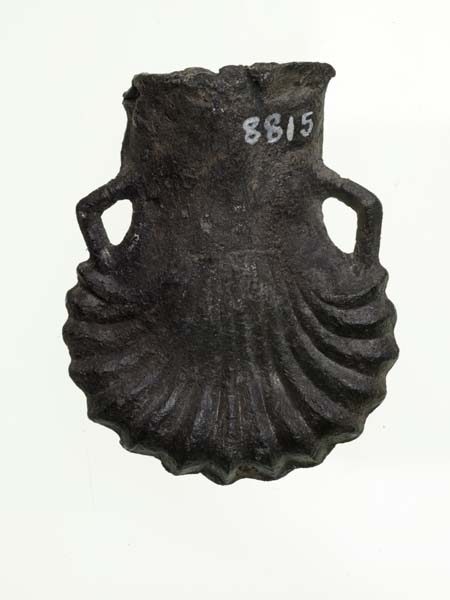About this object
-
ID:
8815
Production date:
Late Medieval; 14th century
-
Location:
In Store
Ampulla in the shape of a scallop shell. Ampullae were small bottles that contained water that been associated with saintly relics – sometimes relics were dipped into the water to transfer some of their power. This water was thought to have powerful properties such as the ability to cure diseases and so ampullae were popular pilgrim souvenirs. The scallop shell was originally the emblem of St James the Greater who had a very popular shrine at Santiago de Compostela in Spain. From the 11th century, as pilgrims to Compostela brought back scallop-shaped souvenirs to their home countries, the scallop soon became a generic symbol for pilgrimage itself and for pilgrims. The small handles on ampullae like this one meant they could be worn round the neck or hung up at home to be used when needed.
-
Measurements
H 39 mm; W 34 mm
-
Materials
lead alloy
-
Last Updated
2024-03-14
Record quality:
Not every record in Collections Online is complete. Some have low quality images designed purely for recognition, while some have been catalogued only to a basic standard. This graphic is designed to give you an impression of the quality of data you can see. 100% meets all our current data standards and has a high quality image, 20% is a basic record with no image. Individual record quality can change over time as new photography is carried out and records are worked on.
X
